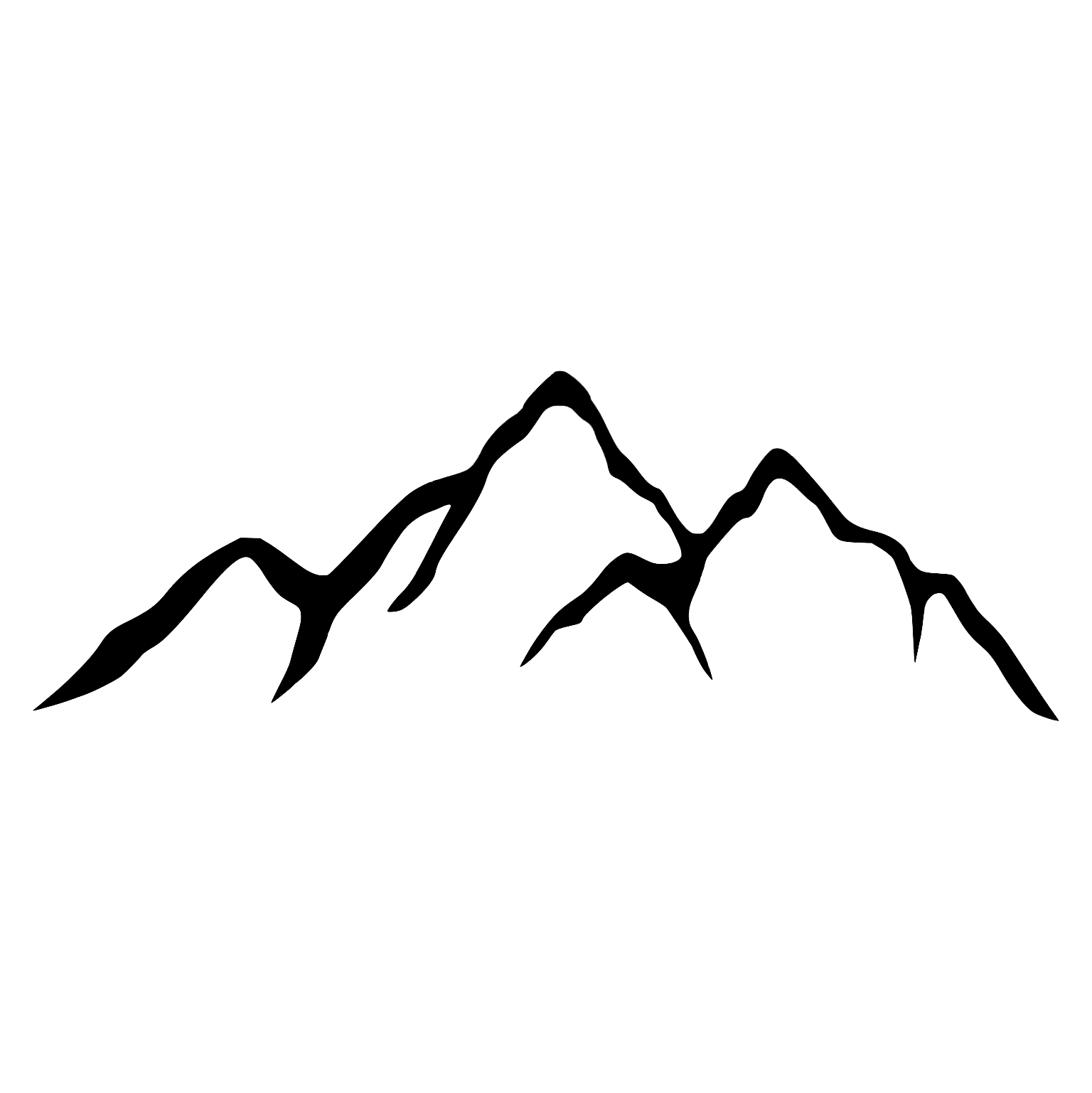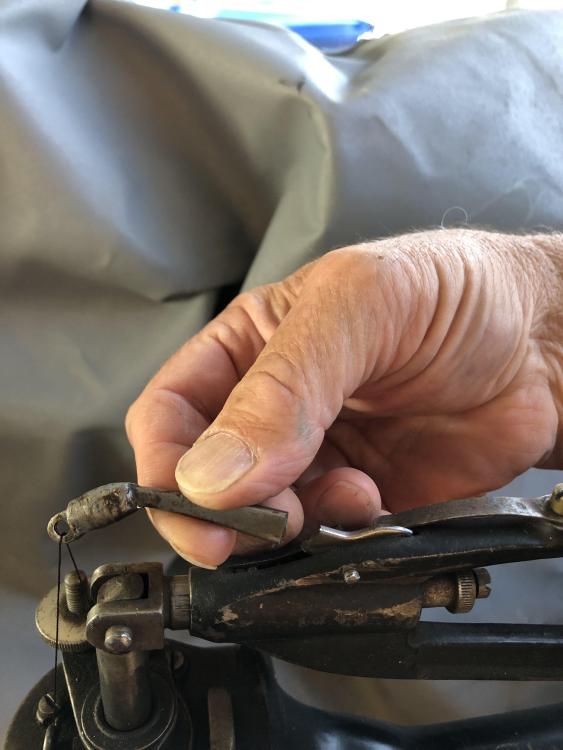
PeterinID
Members-
Posts
30 -
Joined
-
Last visited
Content Type
Profiles
Forums
Events
Blogs
Gallery
Everything posted by PeterinID
-
If you still have it come November and are going to Pendleton I'd be intested
-
Do I really need a bunch of half-round cutters?
PeterinID replied to AEBL's topic in Getting Started
It kind of depends on what you make and how much you make. I make purse straps usually 1" or 3/4" and I got tired of tracing templates and hand cutting. I now use good quality half round and English points (mine are Horse Shoe Brand) for all 1" & 3/4" straps. I have a clicker press and use dies to cut belt ends but I occasionally use hand punches for that. The more things that you create the more you will want ways to save time performing simple repetitive tasks. -
When the machine pushes the needle through the leather the leather must move to make room for the needle and the leather gets displaced downward along the needle path, this creates the bottom side bulging you see. This phenomenon exists with all machine stitching to some degree and thread size, needle size, needle tip leather thickness and tannage are all factors that can increase or decrease the phenomenon.
-
Ordered a Cobra Class 26 : Couple questions
PeterinID replied to DieselTech's topic in Leather Sewing Machines
You can order piping feet directly from Leather machine company. The Facebook groups Tips and Tricks for Cobra Class machines is a great source of information and troubleshooting help. Leather Machine company has good videos available at their website. Search youtube for Al Bane's videos, they are the best I've found. -
I have recently seen a 29k60 listed but when I asked the seller for details they sent me a picture of what I believe is a broken take up arm. I am not familiar with this machine or where to locate parts. I am hoping someone here can provide helpful information
-
Leather bag business asset sale, Selling it all for cheap!
PeterinID replied to BibiBielat's topic in Old/Sold
I sent an email with a question about the thread lot listed at the website last week and no reply yet. -
I buy my thread and bobbins from Leather Machine Company or businesses that distribute LMC machines. For sheaths I would say any thread size 138 and larger is good. You should join the Facebook group "Tips and and Tricks with Cobra Class Leatherworking Machines" it is an excellent group for technical support issues and is endorsed by Leather Machine Company.
-
Join the Cobra equipment tips and tricks Facebook group, great network for troubleshooting help. Buy an angled tip oil bottle like this https://allstitch.com/products/deluxe-plastic-oiler-1711 Review The videos Leather Machine Company has as well as Al Banes YouTube videos. Especially learn all lubricating points, there are more than what has red paint markings - like the linkage inside the head. Enjoy your machine
-
In addition to the transfer of energy while tooling a big reason that stone is preferred is due to the fact that iron staining can occur if you use a ferrous surface (it can also occur if you have iron dust on your hands frome sharpening knives). A stone surface eliminates this - unless it is iron containing stone. Granite is most common
-
I don't think it will sew through either, not uniformly or reliably. I think you would snap needles and crack plastic. If you drilled holes that matched stitch length you might possibly get ok results.
-
I use 69 for interiors and 138 for sewing back to interior
-
After taking a course on skivers at the Pendelton Leather show. I switched from a stone wheel to a rubber one, I set the clearances pretty close and am able to skive many different tempers of light leather very thin.
-
Need Help with Consew DCS-S4 Skiving Machine
PeterinID replied to Leathermaker831's topic in Leather Machinery
You need to learn how to adjust the machine yourself. These machines are identical from manufacturer to manufacturer, the settings requires adjustments depending on thickness and type of leather and that is why you need to teach yourself how to do it. You also need to learn the sharpening procedure. There are several good videos on machine adjustment, here are a few. I took a class on the skiver at the Pendelton Leather show last year that was very useful. -
I have this item and really like it. I was just using it to stitch belts with a 1/4" border and it tracked perfectly within the border.
-
I am certainly no expert but I know there have been advances in tanning techniques since 1886 that could easily alter the possible damaging results of splitting, present day leather cases differently that leather did 50 years ago (or so Jim Linnell told me in a class last year). When we buy hides of any particular weight they have been passed through splitters too.
-
I saw this on Esty the other day, similar to what luckystudio13 posted. https://www.etsy.com/listing/1165256487/aluminum-cylinder-arm-extension-table the guide attachments look nice https://www.etsy.com/listing/1222743460/mini-topstitching-table only $55
-
Horween Utica plus Mystery Horween $3 per foot
PeterinID replied to nstarleather's topic in Old/Sold
PM sent -
Who will make deer skin garmets
PeterinID replied to n866's topic in Exotics, Reptiles, Furs and others
Vaughn's made me a great jacket from and elk hide I sent them. I salted the hide per their specifications, sent it to them, waited a while and they sent me the jacket. -
PM sent
-
You could say that Sheridan style was born by the merging by Don King of the Arizona style that he learned from Showater, the Visalia style he picked up working in California and the pre-Sheridan style present in The Wyoming of his youth. Of the main styles of carving Sheridan is arguably the newest arising from other older classic styles. Part of the history goes to the prerefrigeration days when cattle was raised in the west for hides that were salted and shipped to Spain. Mexican and Spanish leatherwork was some of the best in the world for a couple of centuries.
-
I have the manual Wizcrafts posted, that Consew manual has an diagram image of a Seiko branded machine so I looked and found a manual for the Seiko PW-26 which the Consew appears to be a clone of. The Seiko manual provides more information on the two types - CW, LCW, my Consew is the LCW type but is also marked for CW type lubrication points. Neither manual contains instructions on my machines stitch length adjustment. I have a button close to the post that is depressed and while holding the button down the flywheel is turned until the button drops, then the flywheel is turned forward or reverse to increase or decrease stitch length. When I push the reverse bar down on my machine the stitch length is almost zero. I don't know what to do to - increase the reverse stitch length, increase feeder pressure or something else? pw6.pdf


